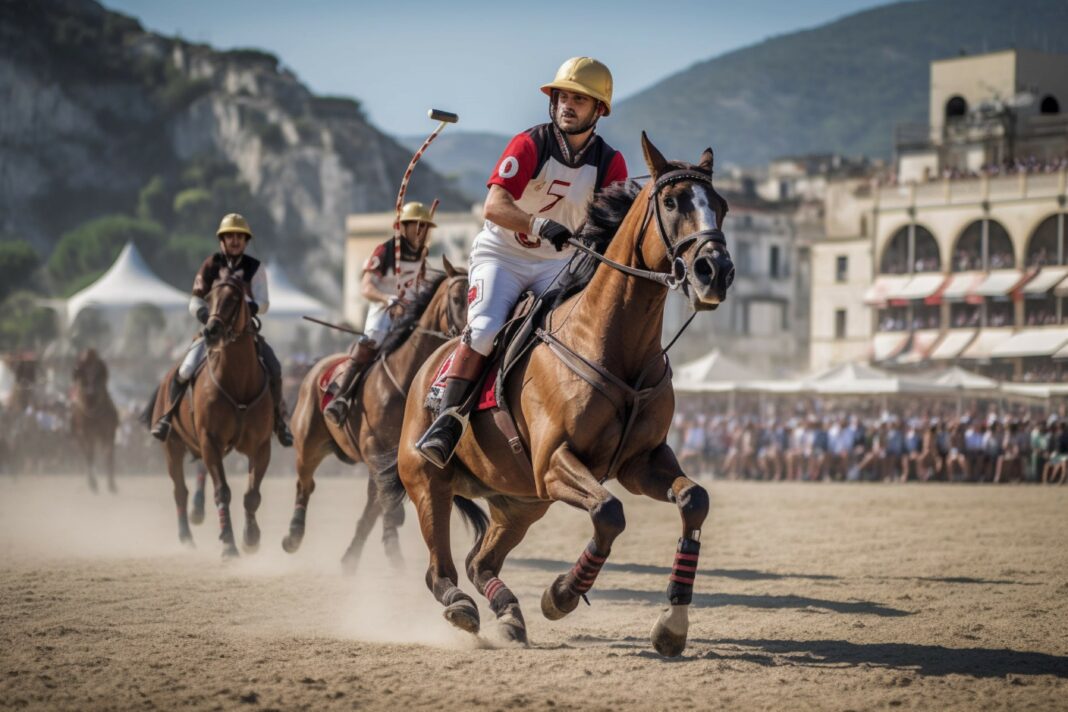Polo is a thrilling and elegant sport with a rich history. If you’re new to watching polo, you might wonder about the best way to enjoy the game while respecting traditions and other spectators. Here are some simple tips to help you fit right in and make the most of your polo experience.
1. Dress the Part
Polo events are often stylish affairs. While there’s no strict dress code, smart casual is usually a safe bet. For men, think of a nice shirt and trousers. Women often wear sundresses or smart outfits. As summer is traditionally a summer sport, materials are lightweight (think soft cottons and linens) and colors are lighter (think whites, pastels and brighter colors). Flat shoes such as wedges (avoid heels!) are a good idea since you are likely to be walking on grass, especially when you stomp divots (continue on to learn what this is)! Don’t forget your sunglasses and hats—whether it’s a big brim straw hat or a Panama Jack style. They’ll keep you cool and help you enjoy the game without squinting on sunny days.
2. Arrive on Time
Arrive in plenty of time before the match starts. This shows respect for the players and ensures you don’t miss any of the action. Polo matches usually begin on time, and it can be disruptive to arrive late. Polo is a spectator sport and very social, often with a picnic area or clubhouse where you can have lunch and get drinks before and during games.
3. Know the Basics of the Game
You don’t need to be an expert, but understanding the basics can make watching polo more enjoyable. Polo is played with four players on each team, and the aim is to score goals by hitting a ball into the opposing team’s goal using a long-handled mallet. A polo chukker is a period of play in a polo match. Each chukker lasts seven and a half minutes. A typical polo match consists of six chukkers, with brief intervals between them for players to rest and change ponies. “Polo chukker” is pronounced as “POH-loh CHUHK-er.” (See a full glossary of terms below.)
4. Respect the Players and Horses
The players and their horses are the stars of the show. Avoid loud noises or sudden movements that could startle the horses. Always stay behind the sidelines during the match for your safety and that of the players. Never touch a polo horse unless you ask first and never walk directly behind a horse, as they are likely to kick.
5. Engage in the Traditions
Polo has some fun traditions you can join in on. At halftime, spectators are invited to participate in “divot stomping,” where you help replace the chunks of grass (divots) kicked up by the horses. This is a great opportunity to stretch your legs and socialize.
6. Mind Your Manners
Be polite and considerate to other spectators. Keep your voice down during the match and avoid using your phone excessively. Polo is a social event, so it’s a great time to meet new people and enjoy the company of others.
7. Enjoy the Picnics
Many polo matches allow for picnicking. Bringing your own food and drinks can be a delightful way to enjoy the event. Just remember to clean up after yourself and be mindful of others around you.
8. Cheer Respectfully
Cheering for your favorite team is encouraged, but keep it positive and respectful. Avoid booing or negative comments, as polo is a sport that values good sportsmanship.
9. Stay Until the End
Even if the match isn’t going your team’s way, it’s polite to stay until the end. The players appreciate a full audience, and it shows good manners to stay for the whole event.
10. Understand the Verbiage
Know the basic lingo and verbiage of a polo game so you can understand what is happening as the announcer talks the spectators through the game.
Polo Glossary for Spectators
Appeal – Claims by players for a foul, usually indicated by raising their mallets above their heads.
Backhander – A backhand swing that sends the ball in the opposite direction to change the play.
Bowl-In – The start or resumption of a polo match where the umpire rolls the ball down the center of a lineup of players.
Bump – When a player uses their pony to push against the side of an opponent’s pony to disrupt their play.
Check and Turn – Slowing the pony and making a safe turn.
Chukker – A period of play in polo, lasting seven and a half minutes. There are usually six chukkers in a match.
Flagger – An official who signals if a goal is scored by waving a flag above the head or no goal by waving below the waist.
Field – The playing area, typically 300 yards long by 160 yards wide, outlined by sideboards.
Goal – When the ball crosses between the goal posts, regardless of who (or what) caused it to go through.
Handicap – A rating system for players based on ability, influencing the team’s total handicap and starting score adjustments.
Hands – A measurement unit for the height of a horse, with one hand equaling approximately four inches.
Hook – Using the mallet to block or interfere with an opponent’s swing below the level of the horse’s back.
Knock-In – Restarting play by hitting the ball from the back line after it crosses the back line, performed by the defending team.
Leave – Riding past the ball to allow a teammate to take the shot.
Line of the Ball – The path created by the ball when it is hit or deflected, which dictates the right of way.
Made Pony – A polo pony that is well-trained and experienced in the game.
Mallet Head – The part of the mallet used to strike the ball, typically the wider face of the head.
Nearsider – Referring to the left side of the pony.
Neck Shot – Hitting the ball under the pony’s neck.
Officials – The game is managed by two mounted umpires and a third man (referee) at midfield.
Offsider – Referring to the right side of the pony.
Pass – Hitting the ball to a teammate, either forward or laterally.
Penalty – A free hit awarded to a fouled team, determined by the severity of the foul, numbered from 1 to 10.
Pony Goal – A goal that occurs when a pony inadvertently causes the ball to go through the goal posts.
Positions – Four players per team, each with specific roles, numbered 1 through 4.
Ride-Off – When two riders make contact to push each other off the line to prevent an opponent from hitting the ball.
Safety 60 – Also known as Penalty 6, awarded when a defender hits the ball over their own back line, allowing the opposing team a free hit from the 60-yard line.
Sideboards – Short boards along the field’s sidelines to help keep the ball in play.
Stick – Another term for the polo mallet.
Stick and Ball – Practice time where players can refine their skills.
Sudden Death – Overtime play where the first team to score wins, used when the score is tied at the end of the last regular chukker.
Swing – Striking the ball with the mallet using one of four basic shots: forehand, backhand, neck, or tail shot.
Tack – The equipment used on a polo pony, including saddles, bridles, and other gear.
Tail Shot – Hitting the ball behind and under the pony’s rump.
Third Man – The referee who resolves disputes between the two field umpires.
Throw-In – When the umpire starts or resumes play by rolling the ball down the center of a lineup of players and ponies.
Time Out – Called by the umpire for a foul, accident, or at their discretion; players may also call a time out for broken tack or injury.
Turn – A backhand hit to change the ball’s direction away from the defending goal.
Umpires – Two mounted officials overseeing the game.
Wraps – Protective bandages worn on the polo ponies’ legs to prevent injuries.
By following these easy tips, you’ll quickly start enjoying polo like a pro. Whether it’s your first match or your fiftieth, the thrill of polo has something for everyone. Have fun and enjoy the game!


